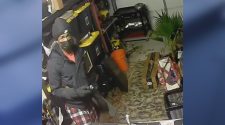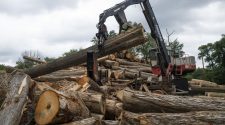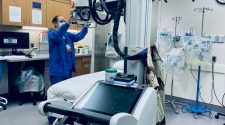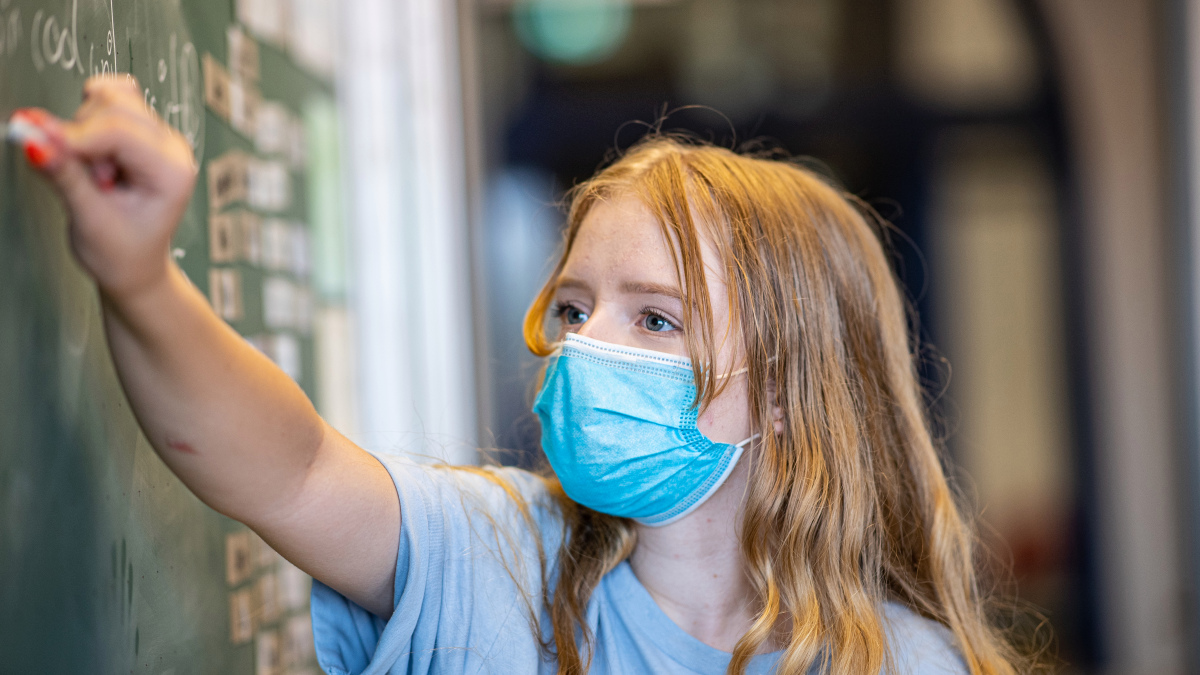The Illinois State Board of Education and the state’s public health department on Wednesday released new guidance for schools as they prepare for the start of the new school year during the coronavirus pandemic.
The new guidance offers a more detailed look at how schools should handle various situations, such as if a student gets sick, or when to close down a building.
Here’s a look at some of the frequently asked questions and the latest answers, which officials note are “subject to change based on new information and updates to existing CDC guidance.”
(To see the full guidance click here or see the document below.)
What actions should be taken by students/staff sent home with COVID-like symptoms?
• All students and staff sent home with COVID-like symptoms should be diagnostically tested. Student and staff should remain home from school until they receive the test results.
• Students and staff who are confirmed or probable cases of COVID-19 must complete 10 calendar days of isolation from the date of first symptom onset and be fever-free for 24 hours without use of fever-reducing medications and other symptoms have improved before returning to school.
• Students and staff returning to school after experiencing COVID-like symptoms but being diagnosed with a non-COVID illness must meet the criteria for returning to school for the illness with which they have been diagnosed. At a minimum, the individual must be fever-free for 24 hours without the use of fever-reducing medication and have had no diarrhea or vomiting in the previous 24 hours. Other diseases have specific criteria for when a student or staff member can return to school. Follow school health policies and communicable disease guidance for those illnesses. A doctor’s note documenting the alternative diagnosis and a negative COVID-19 test result should accompany a student or staff member returning to school with an alternative diagnosis after experiencing COVID-like symptoms. Schools and districts should assist families in locating free or reduced cost medical clinics for assistance where needed.
• Students and staff with COVID-like symptoms who do not get tested for COVID-19 and who do not provide a doctor’s note documenting an alternative diagnosis, must complete 10 calendar days of isolation from the date of first symptom onset and be fever-free for 24 hours without use of fever-reducing medications and other symptoms have improved before returning to school.
• Medical evaluation and COVID-19 diagnostic testing is strongly recommended for all persons with COVID-like symptoms.
If a student is sent home sick with suspected COVID-19 symptoms (e.g., runny nose, fever, diarrhea, etc.), must all their siblings/household members be sent home as well and quarantined for 14 calendar days?
Yes, if one of the household members is being evaluated for COVID-19, the rest of the household must be quarantined until an alternative diagnosis is made or negative result received. If the sick student becomes a confirmed case (i.e., tests positive for COVID-19) or a probable case (i.e., has COVID-like symptoms and is epidemiologically linked to known case), the local health department (LHD) conducting contact tracing will place household contacts, including siblings, in quarantine for 14 calendar days. The health department also will provide guidance on how to safely quarantine and isolated within the household.
Arizona teacher Tavious Peterkin resigned from his position after school officials said he’d have to teach virtual classes from the classroom. The school is fining him $2,000 for that decision.
How many symptoms does a person need to have to be considered suspect COVID-19?
Students and staff exhibiting one or more COVID-like symptoms should be immediately isolated, and evaluated. Schools should evaluate each student/staff to determine if this symptom is new or if it is part of an existing condition for this student/staff.
Our current school policy recommends sending children home with a temperature of 100.0o F or greater. The ISBE and CDC guidance both say 100.4o F or greater. Which should we use?
For consistency with CDC and Illinois Joint Guidance for Schools, it is recommended that schools use ≥100.4o F as the threshold for fever.
If the sick person has a known condition causing the symptoms, e.g., allergies, migraine, etc., can this be taken into consideration?
Every symptomatic person should be evaluated by their healthcare provider on a case-by-case basis and decisions to test for COVID-19 should be based on their personal health history. Diagnostic testing is strongly encouraged whenever an individual experiences COVID-like symptoms as it is possible to have COVID-19 and other health conditions at the same time. Early diagnosis can prevent further transmission. Individuals who have undergone testing should remain home away from others while waiting for COVID-19 test results.
As coronavirus cases continue to rise across Chicagoland, concerns continue to grow for parents and students as they begin to prepare for the upcoming school year. NBC 5’s Chris Coffey reports
Is a physician’s note required to return to school after a ‘close contact’ to a case completes 14 calendar days in quarantine?
Persons who remain asymptomatic throughout 14 calendar days of quarantine do not need a physician’s note to return to school. During the quarantine period, a contact tracer will be closely monitoring the contact to confirm they remain asymptomatic.
What is the definition of an outbreak in schools?
Two confirmed cases of COVID-19 infections occurring within 14 calendar days of each other in individuals in the same classroom would meet the case definition for an outbreak. This is because the cases would be epidemiologically linked (known exposure to) with respect to place (same classroom) and time (within 14 calendar days). This would prompt an investigation by the LHD that may result in recommendations for testing and quarantining all students/staff in the affected classroom.
Playing of some music instruments and singing are recognized as ways COVID can be spread more easily by respiratory droplets. How can we prevent transmission in band or music classes?
Whenever possible, hold music classes outside. When possible, music classes held indoors should occur in well-ventilated spaces and if possible, with windows open. Ensure students (and teachers) are physically distanced from each other by at least 6 feet and consider increasing the amount of social distancing more than 6 feet if space allows. Have students in one line or stagger spacing to ensure maximum distancing. Students should not face each other. Instruments where air is blown into or through should be turned so that expelled air does not go towards others. Consider using instrument covers to prevent spread.
If an athlete is diagnosed with COVID, is it up to the school to notify all other teams that the athlete has been in contact with?
Yes – the school should make generic notifications to other schools and teams with which the confirmed or probable COVID athlete may have had contact without identifying the person’s name. Provide minimal information to protect confidentiality, but enough for the school to respond as needed. The LHD can assist in making this notification.
Can the school be notified of a confirmed or probable case as quickly as possible?
–Schools should ask parents/guardians to notify the school as quickly as possible with any confirmed or probable COVID-19 cases. It is important that schools communicate this expectation to parents/guardians early and often. The local health department (LHD) will also receive a report of a confirmed or probable case from either a lab or provider. However, the report does not necessarily include school information (unless the school was the test submitter). This means that the LHD must obtain this information by interviewing the case/parent/legal guardian. The LHD will notify the school as soon as they have acquired the school information. Schools should identify a point of contact for LHDs, including someone who can be reached after hours.
Chicago Department of Public Health Commissioner Dr. Allison Arwady has repeatedly said that the city – looking to see that case rate under 200 – would consider bringing back some restrictions, including potentially shutting down areas with a high risk of transmission or limiting group sizes, should that rate reach 400.
If a student or staff member presents a note or negative COVID -19 test result, for how many days is that test result valid?
A negative polymerase chain reaction (PCR) test is valid only for the day on which it was reported. It denotes that on the day that the sample was collected, the individual being tested did not have any detectable virus in their system. Because the incubation period (time from exposure to infection) for COVID-19 is 2-14 calendar days, a person with a negative test may still develop infection at some point during the incubation period.
What PPE is required to work in or attend school?
All persons on school grounds including students, teachers, school nurses, administrative and secretarial staff, food service personnel, custodial staff, public safety personnel, etc., must wear a face covering at all times when in school or in transit to and from school via group conveyance (i.e., school buses), unless a specific exemption applies.
Can a face shield be worn instead of a face covering?
Because respiratory droplets may be expelled from the sides and bottom of face shields, they do not provide adequate ‘source control’ and should only be used as a substitute for face coverings in the following limited circumstances: • Individuals who are under the age of 2 • Individuals who are unconscious, incapacitated, or otherwise unable to remove the cover without assistance • Students who provide a physician’s note as documentation that they have a medical contraindication (a contraindication or condition that makes masking absolutely inadvisable) to wearing a face covering • Teachers needing to show facial expressions where it is important for students to see how a teacher pronounces words (e.g., English learners, early childhood, foreign language, etc.). However, teachers will be required to resume wearing face coverings as soon as possible. Preferred alternatives to teachers wearing face shields include clear face coverings or video instruction. There must be strict adherence to social distancing when a face shield is utilized.
How should schools handle students with IEPs or 504 plans who cannot tolerate a face covering or a face shield?
Students with an Individualized Education Program (IEP) or 504 Plan who are unable to wear a face covering or face shield due to a medical contraindication may not be denied access to an in-person education if the school is offering in-person education to other students. Staff working with students who are unable to wear a face covering or shield due to a medical contraindication should wear approved and appropriate PPE based on job specific duties and risks and maintain social distancing as much as possible. Other students should also remain socially distant from students who are unable to wear a face covering or face shield due to a medical contraindication. Schools should consult with their local public health department regarding appropriate PPE for these situations.
Can athletic face coverings, e.g., neck warmers be used as a substitute for cloth face coverings?
CDC recommends that people wear cloth face coverings in public settings and when around people who don’t live in your household, especially when other social distancing measures are difficult to maintain. Cloth face coverings are recommended as a simple barrier to help prevent respiratory droplets from traveling into the air and onto other people when the person wearing the cloth face covering coughs, sneezes, talks, or raises their voice. This is called source control. It is not known if athletic face coverings/neck warmers provide any benefit as source control to protect others from the spray of respiratory particles. CDC does not recommend use of athletic face coverings/neck warmers as a substitute for cloth face coverings.
If there is a confirmed or probable case of COVID-19 within a school, what are the recommendations for school closure?
Decisions for temporary closure of a school will be made by school leaders in consultation with the LHD during its investigation of a case or cluster of cases. If the LHD determines that there is a risk to the school community, the school may be closed temporarily for cleaning and disinfection. This initial shortterm dismissal allows time for the local health officials to gain a better understanding of the COVID-19 situation impacting the school. This also allows the local health officials to help the school determine appropriate next steps, including whether an extended dismissal duration is needed to stop or slow further spread of COVID-19.
Chicago Department of Public Health Commissioner Dr. Allison Arwady talks about the importance of getting kids back into the classroom and how to do that safely in the pandemic.
Are there alternative strategies to school closure that may be considered or employed?
Alternative strategies, less drastic than closure, might include:
• Quarantining the affected classroom where social distancing is challenging (e.g. early childhood).
• Suspending affected classes or closing playgrounds.
• Canceling non-essential activities and meetings.
• Keeping students in constant class groups or classrooms and moving teachers routinely between classes.
• Increasing spacing between students in classes.
• Shortening the school week.
• Staggering school start and lunch/break times across year groups or classes.
Are there any current domestic or international travel restrictions for which we should be monitoring and excluding students and staff?
There is widespread, ongoing transmission of novel coronavirus worldwide. Anyone who has traveled internationally in the past 14 calendar days should stay home and monitor their health. There is no current statewide guidance in Illinois for quarantining domestic travelers. However, some counties or municipalities do require or recommend 14 calendar days of quarantine for travelers returning from states with high community prevalence of COVID-19. IDPH does receive frequent notifications of travel-related exposures. If public health is notified that a student or staff member is a contact to a COVID-19 case as a result of travel, quarantine for 14 calendar days will be required. As an employer working with vulnerable populations, school administrators may consider advising staff who travel that they are required to quarantine (if exposed) due to travel.
To see the full guidance click here or see the document below.

















